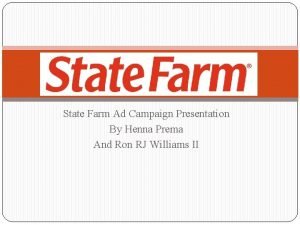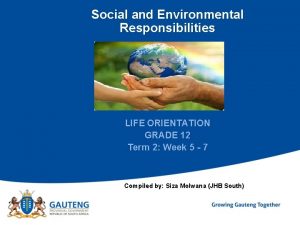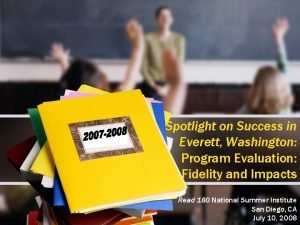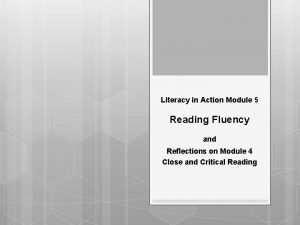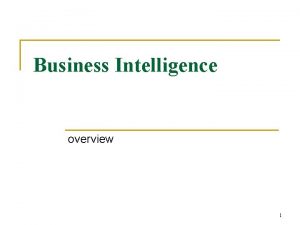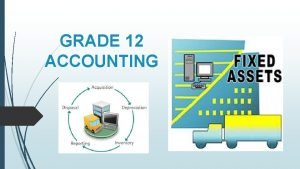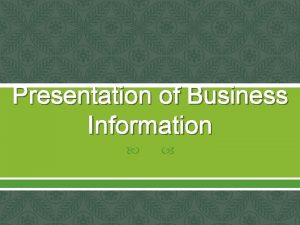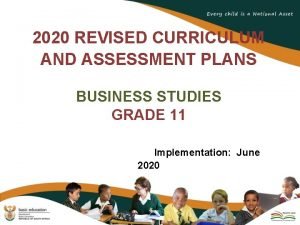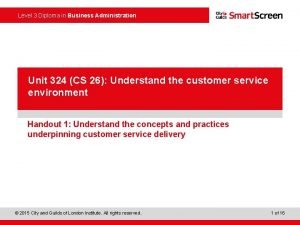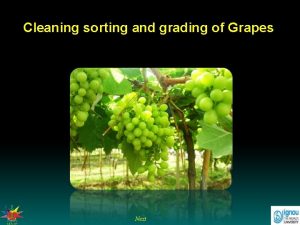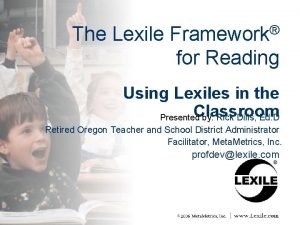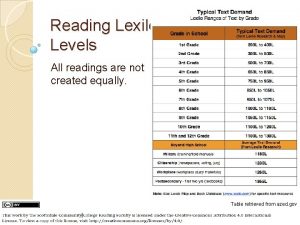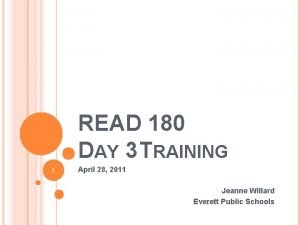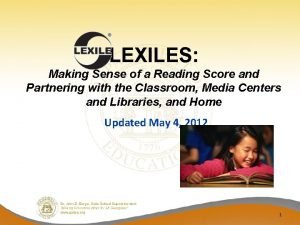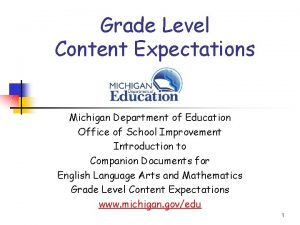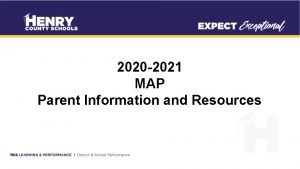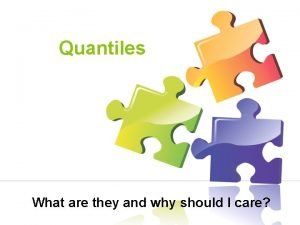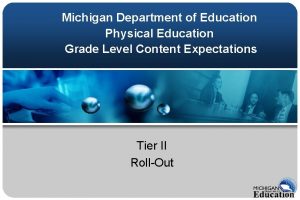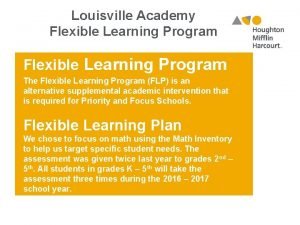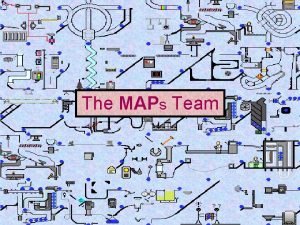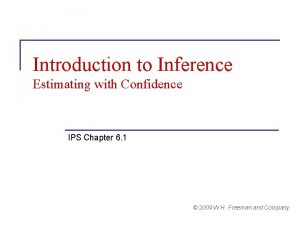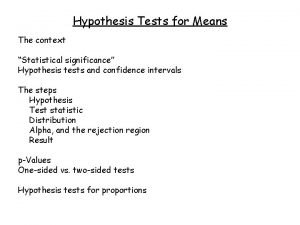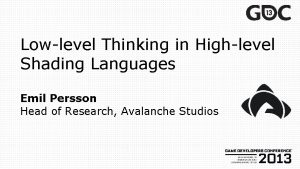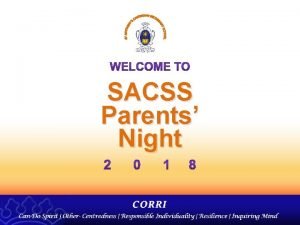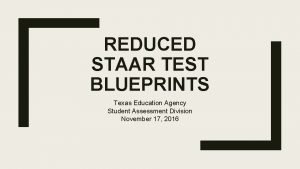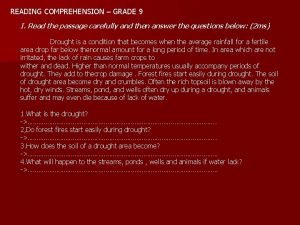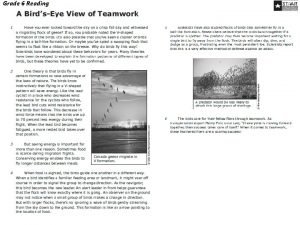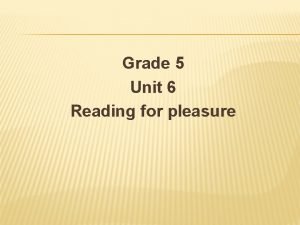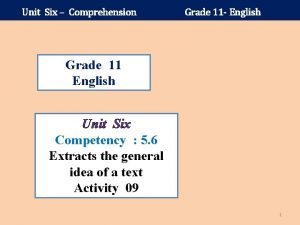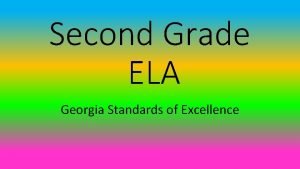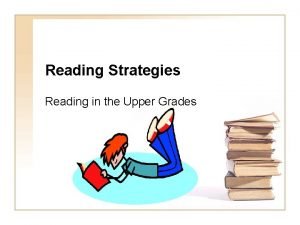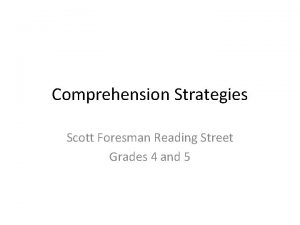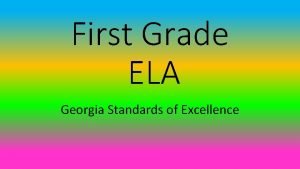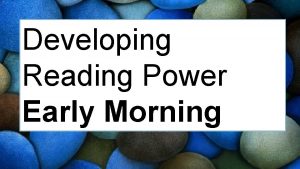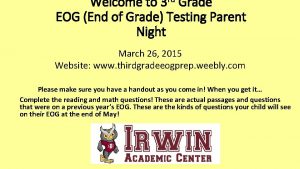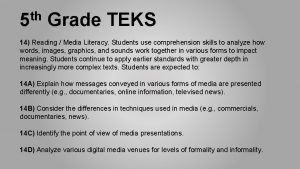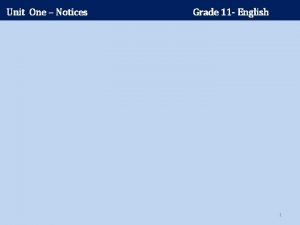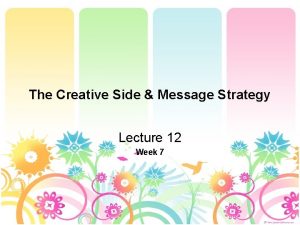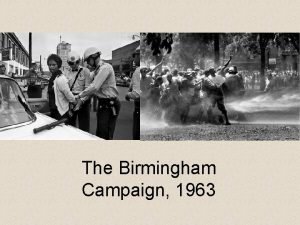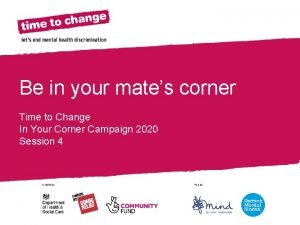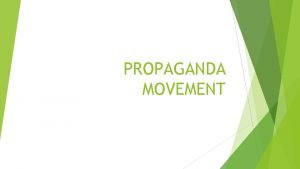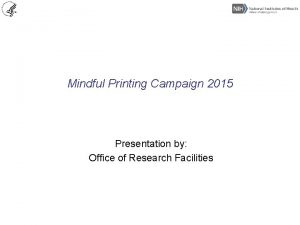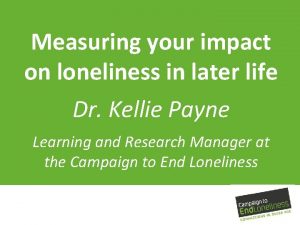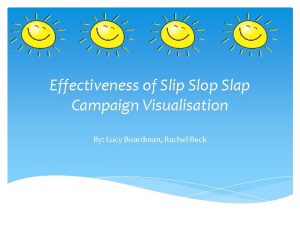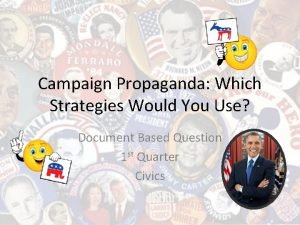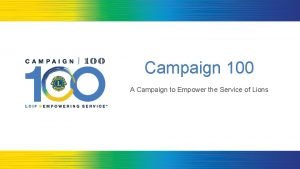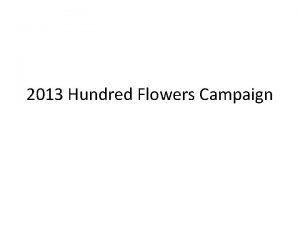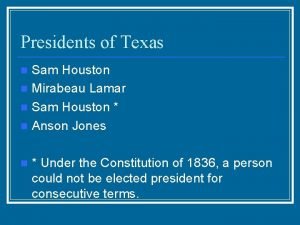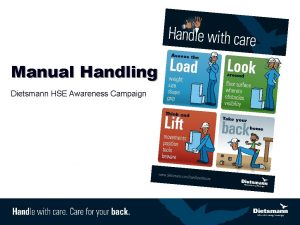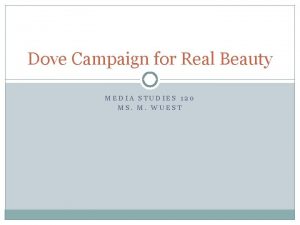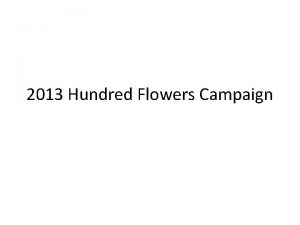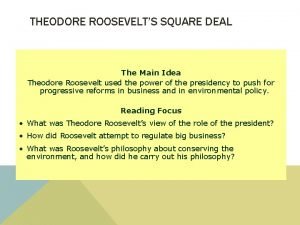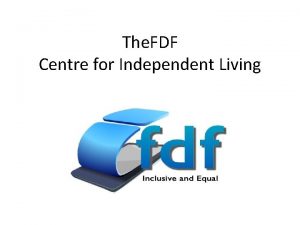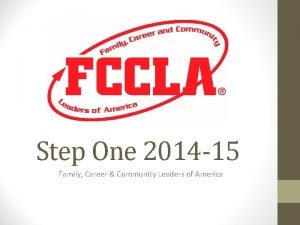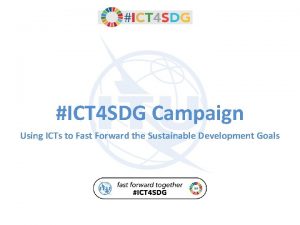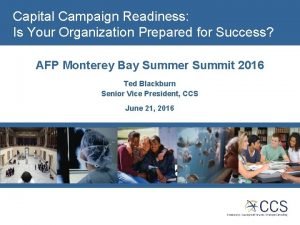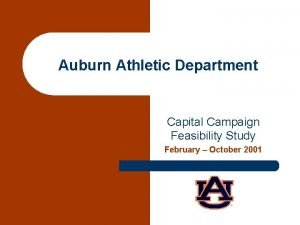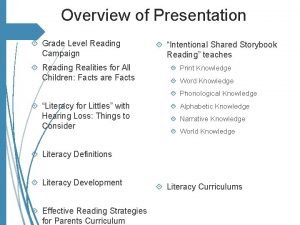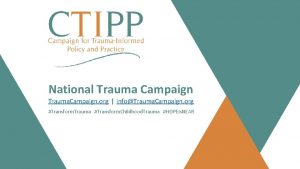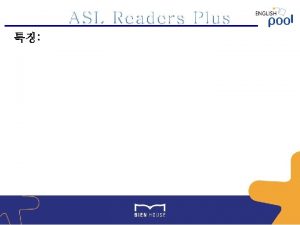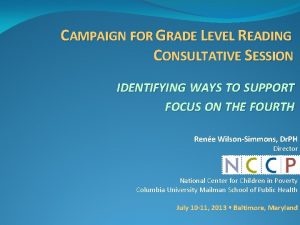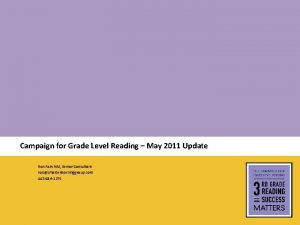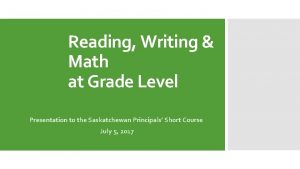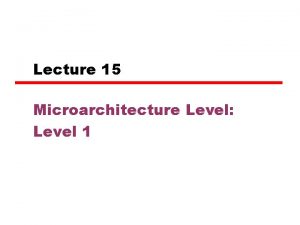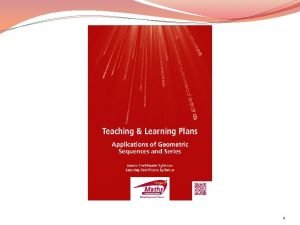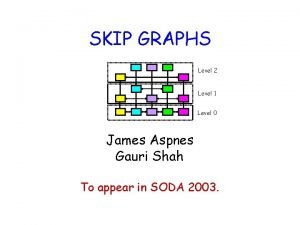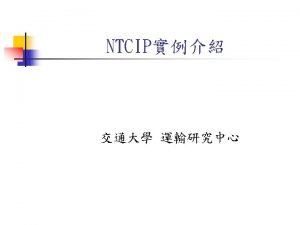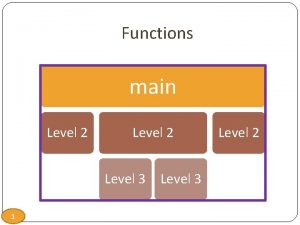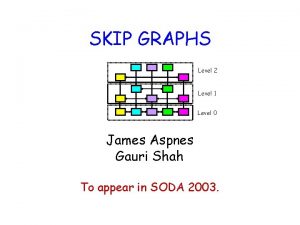Overview of Presentation Grade Level Reading Campaign Reading
















































































































- Slides: 112

Overview of Presentation Grade Level Reading Campaign Reading Realities for All Children: Facts are Facts “Intentional Shared Storybook Reading” teaches Print Knowledge Word Knowledge Phonological Knowledge “Literacy for Littles” with Hearing Loss: Things to Consider Alphabetic Knowledge Narrative Knowledge World Knowledge Literacy Definitions Literacy Development Effective Reading Strategies for Parents Curriculum Literacy Curriculums

Why This Presentation? Reading is foundational to academic success Up through 3 rd grade, children learn to read; After 3 rd grade, children “read to learn” A child who is reading at grade level by 3 rd grade is more likely to succeed in later grades and master complex subject matter Children who are reading proficiently by third grade are 4 times more likely to graduate high school on time We want to show you what it takes to develop gradelevel literacy skills and how it’s done

The Campaign for Grade-Level Reading: 3 rd Grade Reading Success Matters! http: //gradelevelreading. net/ Research shows that proficiency in reading by the end of third grade enables students to shift from learning to reading to learn, and to master the more complex subject matter they encounter in the fourth grade curriculum. Most students who fail to reach this critical milestone falter in the later grades and often drop out before earning a high school diploma. Yet two-thirds of U. S. fourth graders are not proficient readers, according to national reading assessment data. This disturbing statistic is made even worse by the fact that more than four out of every five low-income students miss this critical milestone. About 67 percent nationwide and more than 80 percent of those from low-income families—are not proficient readers by the end of third grade

The Campaign As early as 18 months, children in low-income families begin to fall behind in vocabulary development and other skills critical for school success. 61 Percent of children in low income families have no children’s books at home. Children in low-income families hear as many as 30 million fewer words than their more affluent peers. By age 2, poor children are already behind their peers in listening, counting, and other skills essential to literacy. A child’s vocabulary, as early as age 3, can predict third grade reading achievement. By age 5, a typical middle-class child recognizes 22 letters of the alphabet, compared to 9 for a child from a low-income family. https: //gradelevelreading. net/our-work/school-readiness

Fueling the Campaign Goal: By 2020, a dozen states or more will increase, by at least 100%, the number of low-income children reading proficiently at the end of third grade Funding: https: //gradelevelreading. net/aboutus/campaign-investors Partners: https: //gradelevelreading. net/aboutus/campaign-partners Grade-Level Reading Communities Network https: //gradelevelreading. net/our- network/participatingcommunities

Where Do Children Who Are Deaf or Hard of Hearing Fit Into This Equation? Children who are deaf or hard of hearing have the same need to read and stay on course as children who are not deaf or hard of hearing…. of course! Birth to Three and Pre-School: Because of decreased auditory access: language, vocabulary, pre-literacy and literacy activities may not be as available to children who are deaf or hard of hearing School-age: Because of decreased auditory access coupled with the fast-paced classroom, increased rate of learning, reading to learn, and expectations to meet outcomes, many children who are deaf or hard of hearing are likely to need adaptations to their education in the form of one or more of the following: classroom accommodations, modifications, related services and/or supplementary aids and services to truly have access to instruction.

Pause for Seriously Important Information Supports Modifications Accommodations Related Services Supplementary Aids and Services https: //successforkidswithhearingloss. com/forparents/supports-modifications-accommodations-forstudents/

The Campaign for Grade. Level Reading 3 rd Grade Reading Success Matters Betty Hart and Todd R. Risley (1995) published a study that highlighted the close link between children’s academic success at ages 9 and 10 and their verbal interaction with their parents during the first years of life which became: The 30 Million Word Gap The Role of Parent-Child Verbal Interaction in Language and Literacy Development

Because of Hart & Risley and other researchers… Parent-child verbal interaction is strongly associated with the development of children’s vocabulary and emergent literary skills. Parent- child verbal interaction is associated with development of conceptual knowledge (e. g. vocabulary, understanding of narrative and story structure) which together with subsequent development of decoding skills (e. g. phonological awareness, letter knowledge) leads to literacy. Researchers link the achievement gap between high and low SES Verbal interaction between parent and child is part of a constellation of income-associated home characteristics and family practices that influence reading readiness. http: //www. aecf. org/resources/the-30 -million-word-gap/

How Do We Get Involved in 3 by 3? Beginning in Infancy Purposely recommend ways to create literacy-rich environments High expectations for all children Designing goals consistent with curricular standards Attending to benchmarks Measuring progress Communicating expectations Recruiting others to help

Reading Realities for All Children: Facts are Facts

Reading Realities for All Children A child who has been read to from a young age: Is better prepared to learn to read (National Reading Panel, 2000) Has heard more than 30 million words by age 3 and has a vocabulary of 20, 000 words by age 6 Hart and Risley, 1995, Meaningful Differences in the Everyday Experiences of Young Children Scores highest on reading, math, and general knowledge tests Christian, Morrison, and Bryant, 1998 Predicting Kindergarten Academic Skills

Reading Realities for All Children The Matthew Effect (Stanovich, 1986) In reading, the rich get richer, the poor get poorer Early success in reading, leads to later success in cognition, learning, and vocabulary The gap grows between strong and weak readers Beginning of first grade: gap of 12. 8 words End of first grade: gap of 49. 8 words End of middle school: Good readers read 10, 000 words= large vocab Poor readers read 100, 000 words

Reading Realities for All Children 24% of US 4 th graders read proficiently; 37% do not have basic reading skills Good readers in 5 th grade may read 10 times as many words as poor readers over a school year The average middle-class first grader has been read to more than 1250 hours For some children in low-income families, the comparable figure is 25 hours National Reading Panel, 2006

Reading Realities for All Children from low-income families typically enter school a full year and a half behind their middle-class peers in language ability Low-income families children are exposed to 1/3 the verbiage that high SES children are exposed The average student learns 3, 000 words per year in the early school years (8+ words per day) 1 st and 2 nd grade children need to learn 800+words per year or 2 per day In 1999, only 53 percent of children aged 3 -5 were read to daily by a family member Reading 1 min/day: exposed to 8000 wds/yr Reading 5 min/day: exposed to 282, 000 wds/yr Reading 20 min/day: exposed to 1, 800, 000 wds/yr Laura Justice, 2005

Reading Realities for All Children Phonological Awareness has been associated with the ability to read and to spell Child’s phonological awareness upon entering school is the strongest predictor of success for reading (Adams, 1990, Stanovich, 1986) Phonological awareness is fundamental to spelling (Goswami and Bryant, 1990)

National Early Literacy Panel convened in 2002 Reviewed 8000 articles, used 500 for their metaanalyses Final Report: Developing Early Literacy: Report of the National Early Literacy Panel, 2008 Identified 11 skills linked to early literacy achievement and predictive of achievement at the end of kindergarten or beginning first grade

Precursor Literacy Skills 6 had a medium to large predictive relationship Alphabet Knowledge Phonological Awareness Rapid Automatic Naming (RAN) of letters or digits RAN of objects or colors Letter Writing Phonological Memory 5 were moderately correlated with later measures of literacy development Concepts about Print Knowledge Reading Readiness Oral Language Visual Processing

Precursor Literacy Skills Defined 1. Alphabet Knowledge: knowledge of the names and sounds associated with printed letters 2. Phonological Awareness: ability to detect, manipulate, or analyze the auditory aspects of spoken language, to distinguish or segment words, syllables, or phonemes (independent of meaning) 3. RAN of letters or digits: ability to rapidly name a sequence of random letters or digits 4. RAN of objects or colors: ability to rapidly name a sequence of repeating random sets of pictures of objects or colors 5. Letter Writing: ability to write letters in isolation on request or to write one’s own name 6. Phonological Memory: ability to remember spoken information for a short period of time

Precursor Literacy Skills Defined 7. Concepts about Print: knowledge of print conventions 8. Print Knowledge: a combination of elements of AK, concepts about print, and early decoding 9. Reading Readiness: a combination of AK, concepts of print, vocabulary, memory, and PA 10. Oral Language: ability to produce or comprehend spoken language, including vocabulary and grammar 11. Visual Processing: ability to match or discriminate visually presented symbols

Kids and Family Reading Report In Spring 2010, Scholastic, in conjunction with Quinley Research and Harrison Group, conducted a survey to examine family attitudes and behaviors regarding reading books for fun in today’s digital age. The key findings of this research, based on a nationally representative sample of 1, 045 children age 6– 17 and their parents (2, 090 total respondents) are as follows:

The frequency of reading aloud to young children has increased since 2014 Percentage of Parents Who Say Their Child is Read Books Aloud 5– 7 Days a Week

The frequency of reading aloud still drops significantly after age 5 and again after age 8. Percentage of Parents Who Say Their Child is Reading Books Aloud 5– 7 Days a Week Base: Parents with Children Ages 0– 11

On average, families across America with kids ages 0– 17 have 104 children’s books in their homes. Average Number of Children’s Books in Home Difference of 60 books from low to high income

“Literacy for Littles” with Hearing Loss: Things to Consider Read to Me

“Literacy for Littles”: Hearing Loss and Literacy Read to Me!

Hearing Loss and Literacy Reading problems stem from: Phonological awareness/phonemic awareness and decoding difficulties Inadequate language (reduced content, form and use) Lack of experiences and world knowledge/current events knowledge Difficulties understanding another’s perspective, dialogue and narrative language skills Lack of exposure to books being read to them/book knowledge

How can we improve literacy? “ We need to catch them before they fall” Torgensen, 1999

Hearing Loss and Literacy Teach listening first: to promote neural connections within the auditory cortex To facilitate language and reading competence. Phonemic and Phonological Awareness training begins in infancy. Hearing does NOT equal Listening!

Literacy Definitions

Literacy Definitions Metalinguistic Awareness: think about, talk about, and manipulate language; the language of learning Plays an important role in phonological, word, syntactic, pragmatic and meta-textual awareness Phonological Awareness: large units such as words, syllables, AND phonemes; one aspect of metalinguistic awareness Sentences: made of words Words : made up of syllables and sounds Syllables: made up of sounds Letters: represent sounds Phonemic Awareness: speech sounds only; one aspect of phonological awareness Spoken words are sequences of phonemes which are the smallest units of speech

A Simplified View of Reading Decoding + Comprehension = Reading Decoding Skills allow information to “get in” Print knowledge Phonological and Phonemic Awareness Phonics and the Alphabetic Principle Language Comprehension allows us to “make sense of it”…once it is “in” Grammar Vocabulary Narrative skills Metalinguistic awareness

A Simplified View of Reading Non-fluent Reader Mental effort on DECODING Negatively impacts Comprehension Fluent Reader Decoding is automatic, fast and accurate Mental effort on COMPREHENSION The fluent reader can accurately decode and comprehend at the same time with automaticity.

A Complex View of Reading It’s not so simple after all…

Model of the Reading Process Anne Van Kleek, 1998 Context Processor üVocabulary Development üWord Awareness Meaning Processor Reading Success Orthographic Processor üWorld Knowledge, üSyntax üReasoning üBook Conventions üNarrative Development Phonological Processor üSyllable Segmentation üRhyming üPhoneme Segmentation üLetter Knowledge üPrint Conventions Adams’ (1990)

1) Context Processor The processor in charge of constructing a coherent, ongoing interpretation of the text Focus on the meaning utilizing World knowledge Syntax Narrative Development Book Conventions Reasoning This processor allows them to attach meaning to print at an early age

2) Meaning Processor Focus on Meaning utilizing Vocabulary Development Word Awareness Segmentation-word boundaries, awareness that words are a unit of language Word Consciousness-words are separate from their referents Book reading and vocabulary development are mutually promoting

3) Phonological Processor Phonological awareness is highly correlated with early reading ability Subskills include Syllable segmentation Ba/by, can/dy, com/pu/ter Rhyming Onset and rime- p/op, h/op, t/op, c/op Phoneme segmentation Relies on phonological awareness or conscious awareness of the sound component of words

4) Orthographic Processor In charge of individual letter recognition and the associative links between and among them Over time, the linkages allow the input to consist of simultaneously processed letter sequences Subskills Print Conventions We read the print from left to right, top to bottom and front to back Letter Knowledge Knowing the names, shapes and sounds of letters A strong predictor of speed in learning to read

Integration of the Processors Research suggests that the processors eventually integrate and that this integration is fostered by two stages of preliteracy development to be emphasized sequentially but separately �Stage One: Emphasizing Print Meaning �Stage Two: Emphasizing Print Form and Early Form- Meaning Correspondence � To become a successful and fluent reader, a combination and integration of all processors is necessary

Phonological Awareness Goals �Recognize and produce rhyming words �Orally segment sentences into words �Orally blend root words to form compound words �Isolate first or last root words in compound words �Orally delete root words into compound words �Orally segment words into syllables �Identify # of syllables �Orally blend syllables into words �Isolate initial, final, medial syllable �Delete initial, final, and medial syllables �Isolate initial, final, and medial phonemes in words

Phonological Awareness Goals Segment words into phonemes Blend phonemes into words Delete initial, final and medial phonemes from words Substitute initial, final, and medial phonemes in words Say the sounds of consonants /short and long vowels Say sounds of consonants and vowel digraphs, dipthongs, blends, and r-controlled vowels Decode VC, CCVC, CVCC, C CVCC words Read and spell words

Literacy Development Loving to Read! Learning to Spell and Write! It starts at a young age!

Birth to 12 months Literacy Development Reaches for book Puts books to mouth Sits in lap with head steady Turns pages with help Looks at pictures Vocalizes and pats pictures Prefers simple pictures, bright colors, and faces Point to words and pictures while naming

12 -18 months Literacy Development Sits without support Carries books Holds book with help Turns board pages, several at a time Points at pictures with one finger Make same sound for certain pictures Points when asked “Where’s the -----” Turns book right side up Gives book to adult to read

18 -24 months Literacy Development Turns board book pages one at a time Names familiar pictures Fills in words to familiar stories “reads” to dolls or stuffed animals Recites part of well-known stories Attention span is variable, may not sit through entire story Understands vocabulary (book, cover, story, beginning, end, the end) Begins to ask questions (What’s That? )(What does this say? )

24 -36 months (2 -3 years) Literacy Development Learns to handle paper pages Goes back and forth in books to find favorite pictures Recites whole phrases, sometimes whole stories Protests when adult says a word wrong in familiar story Coordinates picture with text Reads familiar books to self Explores print and recognizes some words in stories and environmental print Shows top to bottom and left to right orientation Recognize beginning and ending of stories Points to title and author Recognizes favorite books and finds them Asks “what does this word say? ”

37 -48 months (3 -4 years) Literacy Development Wants to learn to read and reads simple books independently Recognize a few sight words and many environmental print words Notices differences in print (egg vs eggs) Use knowledge of alphabet to find words in books Begins to decode simple words Imitates adult reading with eye movements, and tone of voice Understands reading for pleasure vs. for information Understands concepts of author, title, illustrator, simple plot lines, making predictions, cause and effect Develops directionality Print is read, pictures support the print Responds to emotional content of story Differentiates letters from words from numbers Recognizes rhymes and beginning sounds in words

49 -60 months (4 -5 years) Literacy Development Wants to decode words Identifies the cover, the title, and where the author and illustrator information is located Holds book properly, turns pages, moves eyes, follows print with finger Storybooks are different than newspapers May not understand “silent reading” Demonstrates understanding of plot and sequences of stories Retells stories with structure and future tense Understands letters, words, sentences and punctuation Identifies all letters and reads many words Understands rhyme and syllables

Kindergarteners Phonological Awareness: Rhyming ( given a word can produce a rhyming word) Clapping/counting syllables Substituting sounds in words Blending phonemes into a word Counting phonemes Manipulating letters to make new word Separate onsets and rime Attend to word beginnings and endings Letter sequences represent sound sequences

Kindergarteners Other literacy skills : Know letter sound associations Recognize uppercase and lowercase letters Tell which of three words is different (sit, suit) Tell which of three words share a sound (dog, doll, pen) Write uppercase and lowercase letters Use letter sound knowledge to spell (invented spelling) Know conventionally spelled words Write their own names and names of friends Write most letters and some words from dictation

First Grade Discusses how, why, what-if? In sharing nonfiction and fiction texts Uses basic punctuation and capitalization Predicts and justifies what will happen next in stories Recognizes irregularly spelled words by sight (have, said, where, two) Has reading vocabulary of 500 words (sight and easily sounded out words) Accurately decodes orthographically regular one syllable words and non words (zot, fet, shik) Spells and decodes four letter short vowel words Oral reading fluency is 60 WCPM at 50 th percentile

Second Grade Understands different characters, narrators and authors tell stories with different points of view Compares two or more versions of the same story )Cinderella vs Ella the Enchanted) Describes how characters repond to events and challenges Identify main topic of 3 -5 paragraphs and main idea of each paragraph Decodes and encodes chained vowels/vowel digraphs Recognizes stories have beginnings, identify proflems and how events unfold to the ending of the story Oral reading fluency is 100 WCPM at 50 th percentile

Third grade: 3 by 3 Segments , blends, deletes and manipulates sounds and syllables in real and non real words Uses prefixes, suffixes, and morphological markers to decode and encode unfamiliar words Uses prior knowledge to make connections, inferences and predictions from texts Understands and organizes information using compare and contrast and analogies Writes five sentence paragraphs Edits first drafts and uses correct punctuation Reads silently longer texts staking weeks to complete Uses reading to build vocabulary and knowledge in all academic subjects Oral reading fluency of 112 WCPM at the 50 th percentile FOURTH GRRADE INCREASES TO 133 WCPM

Why should we teach parents to read to their child? Provides the child a reading role model Speech and audition share a common linguistic base with reading and writing Improves complexity and structure of language Improves critical reasoning skills Teaches letters and sounds and rhyming Conditions child to associate reading with pleasure Improves vocabulary and grammar Improves attention span Stimulates imagination Improves academic success and future career Trelease, J. (2001)

What is the most important childhood activity? “Intentional” Shared Storybook Reading Can systematically build children’s knowledge of language, literacy and the world around them. 1985 National Commission on Reading: Reading aloud to children is the single most important activity for literacy development and eventual reading success!

“Intentional” Shared Storybook Reading Curriculum Strategies and Suggestions

Suggestions for Reading With Your Child Getting Ready A comfortable chair or couch for cuddling and close viewing Twenty minutes of un-interrupted time A good book or three Pick books with rhymes, repetition, big unexpected events, problems to solve, and are PRINT salient A happy frame of mind, have fun, laugh and smile Ask “what do you think this story is going to be about? ” let’s think about the title and the pictures/illustrations on the COVER and on the BACK and on the FIRST PAGE

Suggestions for Reading With Your Child Read in your best, most expressive voice Take on voices of characters Use a somewhat slow rate Be sure the child can see the print as you read, point to the print Let the child hold the book or turn the pages Observe , Wait , and Listen to your child Use acoustic highlighting Read the same books your child enjoys OVER and OVER Let the child see you read often Continue to read to your child even after he is a “reader”

Suggestions for Reading With Your Child Let the child chime in on rhymes, repeats, refrains Use auditory closure and “expectant lean” strategies Let the child re-tell the story Pose questions, “what would YOU do if…” Plan a follow-up, related activity Ask, “What do you think will happen next? ” Make distinctions between what is a letter, sound, word, sentence, and paragraph Read first, without always showing the pictures

“Intentional” Shared Storybook Reading Promotes Language and Literacy in the following areas: Print Knowledge Word Knowledge Phonological Knowledge Alphabet Knowledge Narrative Knowledge World Knowledge

Building Print Knowledge How?

Print Knowledge Provides a tool for translating the alphabetic code to decode words which facilitates reading comprehension Understanding of Printed letters Printed words Book conventions Differences between print and pictures Print carrying meaning How to hold a book, turn the pages, and read from left to right

Activities to Encourage Print Awareness Goal: to understand the role of words as carrying meaning Storybook: Growing Vegetable Soup (1987) by Lois Ehlert Description: bold pictures with salient large print, sequence from planting, growing, harvesting, preparing, and eating vegetables, point to words when reading, comment about pictures, letters and words, these words tell the story, what does this word above the shovel say? , find another word that looks like this

Activities to Encourage Print Awareness To identify environmental print and how print can change to represent meaning of vocabulary and words in songs Storybook: The Wheels on the Bus (1990) Paul O. Zelinsky Description: the song is written along with illustrations of the bus moving through town with various environmental print signs. Point out print on signs and in speech bubbles. The words are written to represent the meaning of vocabulary such as “bumpety bump”, “round and round” and “up and down”.

Building Word Knowledge How?

Word Knowledge Understanding and using words of different form classes (nouns, verbs, adjectives, adverbs) and having a word repertoire for representing thoughts, needs interests, and ideas An object is first described as big, then large, then gigantic and monstrous Give greater precision in representing thoughts Greater word knowledge improves reading comprehension

Activities to Encourage Word Knowledge Goal: to understand body parts and senses and object functions “What do you do with your nose? ” and “What do you smell with? ” Storybook: My Five Senses (1989) Alki Description: A little boy takes a senses adventure seeing, hearing, tasting, smelling and touching various objects. These verbs are repeated throughout the story along with word “senses”. You can expand by teaching quality concepts with seeing (bright, shiny), hearing (loud, quiet), tasting (yummy, delicious, awful, yucky, sweet, sour), and touching (rough, smooth, bumpy, scratchy, silky). Teach body parts (eyes, ears, nose, hands, and mouth). Expand by playing Simon Says with directions such as touch your body part, or touch the rough one then taste the sweet one, etc.

Activities to Encourage Word Knowledge Goal: to understand use verbs and verb morphology and to increase verb vocabulary along with less familiar animal and animal part vocabulary Storybook: Dinnertime (2007) Jan Pienkowski Description: animals appear to eat a frog (vulture, gorilla, tiger, crocodile, shark). Discuss monkey, gorilla, alligator, crocodile. They go away with past tense verbs (flapped, plodded through the jungle, bounded into the river, rubbed eyes and floated dozily out to sea, and gobbled him up). Point out parts of animals such as sharp teeth, pointy snout, whiskers, fangs, beak).

Building Phonological Knowledge How?

Phonological Knowledge Tips for Parents Draw attention to words, syllables, and sounds Look for things we see that rhyme with bag. Look for things that start with the /b/ sound. Look for things that end with a /p/ sound. Count the syllables in bicycle. Count the sounds in hat. How many words are in this sentence? I will say the sounds in this word and you guess the word. Look at the first letter of this word.

Activities to Encourage Phonological Knowledge Goal: to segment words into syllables and blend parts of words Storybook: If You Give a Pig a Pancake (1998) by Laura Numeroff Description: includes many compound words. Comment on word parts, clap parts of word, say parts of word separately, pan and cake are two little words, what happens when we put them together? (homesick, suitcase, backyard, mailbox, wallpaper) Where do I start reading on this page?

Activities to Encourage Phonological Knowledge Goal: to demonstrate rhyme awareness and rhyme production Storybook: Llama Mad at Mama (2007) Anna Dewdney Description: few boldly printed words per page with rhyming words, comment on how the words rhyme, ask what words rhyme, think of other words that rhyme, use auditory closure and expectant lean to prompt the rhyming word. Point out the letters in the words that rhyme(signs/lines, fun/sun, car/are, treat/seat, feet/sweet, etc. ) Some words are in bold. Generate rhyming words for these (whine/line, play/day).

Activities to Encourage Phonological Knowledge Goal: to demonstrate awareness of and produce beginning sounds and rhyming and to understand consonant digraphs have two letters, but make one sound Storybook: Sheep in a Jeep (1991) by Nancy Shaw Description: the sheep must find a way to make the jeep go. Comment on the beginning sounds of words, say the first sounds of words, say sheep slowly, shhhh…ok stop, that is first sound, find two words that start with the same sound, what letters make this sound? Which words rhyme? Talk about vowel digraphs ee and ea.

Building Alphabet Knowledge How?

Alphabet Knowledge Important aspect of literacy development during preschool and kindergarten Alphabet knowledge is a good predictor of reading success Amount of experience with books and print predicts alphabet knowledge in K and 1 st grade Alphabet knowledge are better able to benefit from phonics instruction in K

Activities to Encourage Alphabet Knowledge Goal: to develop an interest in alphabet letters Storybook: Dr. Seuss’s ABC (1963) Dr. Seuss Description: print-salient qualities: few words per page, repetitive print, and print embedded in the illustrations familiar for children. Letters are a prominent feature within the text and illustrations. Comment and point to letters.

Activities to Encourage Alphabet Knowledge Goal: to identify several letters in his or her own name, to identify letters and match letters and print throughout the text, to identify uppercase and lowercase letters Storybook: Alphabears, An ABC Book (1984)Kathleen Hague Description: few words in large print are used to tell stories about bears. The initial letter is bolded and in color. Talk about capital letters, uppercase letters, and lowercase letters. “Find all the B letters Look, this letter is e like in your name. Your name starts with this letter B. ” Find letters within the pictures.

Building Narrative Knowledge How?

Narrative Knowledge A child’s spoken and written descriptions of real or fictional events experienced in the past, the present, or the future A narrative contains a minimum of two sequential independent clauses Narratives are de-contextualized monologues (their focus is on people, characters, and events not in the present

Narration Objectives Demonstrate understanding of stories Retell, illustrate, or dramatize story that was read to child Retell event which has happened to themselves or someone else Share 1) conversational, 2) story/fictional, and 3) factual narratives

Teach Syntax for Narratives Conjoiners (. . and then, ) Labels and action words Time indicators (a long time ago, sometimes, finally, usually, never, often) Verb tenses Connectives (although, however, but, regardless, when, so that) Adverbs and adjectives

Activities to Encourage Narrative Knowledge Goal: to discuss the sequence of events in a story Storybook: The Very Hungry Caterpillar (1994) by Eric Carle Description: A caterpillar travels during the week in search of food before building a cocoon and becoming a butterfly. Adverbs allow elaboration on how and in what ways events occur as we tell narratives. Prompts child to recall events and predict what might happen next. Discuss days of the week. Discuss the highpoint in the story when he finally becomes a butterfly. Sequence the foods he ate from first to last in left to right order. Talk about the time and place in the story and how it changes.

Activities to Encourage Narrative Knowledge Goal: to discuss the characters, time sequence, and setting of a story Storybook: Only My Dad and Me (2003) Alyssa Satin Capucilli Description: This story chronicles a Dad and Son across different seasons of the year. It occurs across multiple settings. Who are the characters? Where are the characters? When did the characters do rake leaves, roll snowballs, take hikes, pick shells, celebrate. Discuss setting answers where? And when? Where are they now? When is this? That is the setting. The setting in this story changes.

Building World Knowledge How?

World Knowledge Children understand concepts such as: Cultural diversity Money Character, emotions, and temperament Nature, time, geography, weather Life issues (birth, death, divorce)

Activities to Encourage World Knowledge Goal: to understand different cultures Storybook: The Legend of the Indian Paintbrush (1988) Tomie de. Paolo Description: An American Indian boy learns to paint beautiful pictures on the plains using the colors of sunsets for inspiration. He leaves his paintbrushes on a hillside and the brushes multiply into plants of brilliant reds, oranges and yellows. Every spring the hills and meadows burst into bloom with “indian paintbrush blooms”. Discuss costumes and legends to discover. Reference print and beginning sounds. Extend world knowledge by conversing about the people and places in the illustrations.

Activities to Encourage World Knowledge Goal: to understand characters, emotions, and temperment and to discuss loneliness, missing someone you love and not appreciating them when they are around Storybook: Duck at the Door (2007) Jackie Urbanovic Description: A duck knocks on the door of a house full of animals late at night. He stayed behind when his flock flew south because he thought he would like the cold, but he didn’t and he was lonely. He stayed many months and became a nuisance to the other animals. They were excited for him to leave and join his flock…so, he left in the spring. The animals missed him and couldn’t wait for him to come back to stay the next winter. Discuss feelings of loneliness, missing someone, bothering people, etc.

Can We Provide A Parent Curriculum to Improve the Quality of the Reading Experience? Most certainly, “Yes!”

Literacy Curriculums Target top down and bottom up processes SPELL-Links Phonological Awareness Kits Lindamood Li. Ps Lindamood Visualizing and Verbalizing Lindamood Seeing Stars Wisnia Kapp Reading Program Wilson Reading System The Source for Reading Fluency Learning Ladder Story Grammar Marker

SPELL-Links to Reading and Writing (Wasowicz, Apel, Masterson, Whitney) Spelling, reading, and writing activities that teach critical word study skills Designed to improve spelling, reading decoding, fluency, vocabulary, comprehension, writing accuracy and organization Spelling success includes Phonological awareness (relize for realize) Phonics (K is never spelled ck, cc at beginning of words) Vocabulary( bare vs bear, question words start with WH) Word parts (morphology, prefix, suffix, root words) Mental images of words (MOIs: rope not roap)

Phonological Awareness Kits Lingui-System Primary (ages 5 -8) Rhyming Word Level: segmenting sentences and compound words, blending, isolation and deletion Syllable Level: segmenting, blending, isolating, deleting Phoneme Level: isolating, segmenting, blending, deleting, substituting Grapheme level: blending, substituting, decoding and encoding Intermediate (ages 8 -13) all the skills for Primary plus Consonant and vowel digraphs R controlled vowels Silent e rule

Lindamood- Bell Li. PPs Weak phonemic awareness leads to difficulties in: Recognizing same and different phonemes Identifying the number and order of sounds in words Blending sounds in words Word attack Spelling and syllabification Developing an oral-motor, visual and auditory feedback system Identify number and order of phonemes in syllables and words

Visualizing & Verbalizing Lindamood-Bell Gestalt imagery is a primary factor basic to the process involved in oral and written language comprehension, language expression, and critical thinking. Sensory information connects us to language and thought “I make the movies when I read”

Visualizing and Verbalizing Present and teach use of structure words to aid in DETAILED verbalizations What Movement Size Mood Color Background Number Perspective Shape When Where Sound

Vanilla Vocabulary Nanci Bell Develops vocabulary through imagery. Visualizing and Verbalizing Verbalize and gesture the visualization Verbalize own sentence and definition Experience words in context of story

Vanilla Vocabulary Examples Brilliant: very bright or sparkling; very, very intelligent 1)The queen’s brilliant diamond necklace flashed in the sun. 2) The moonlight was so brilliant that I could see my shadow on the ground behind me. 3)Albert Einstein was on of the most brilliant scientists whoever lived. 4) Dan gets good grades because he studies every night, not because he is brilliant.

Wisnia Kapp Reading Program (WKRP) Multimodality Sound Symbol Association Nonsense Word Reading Vowel and Consonant Digraphs Syllables and Sounds Six Syllable Types Complex Orthographic Elements: Consonant blends (bl, st, nd) Consonant digraphs (sh, th, wh, ch) Vowel digraphs (ea, ee, oa, oo) Dipthongs (aw, au, ow) Phonograms (ight, oug, tion)

Six Syllable Types �Closed Syllable: drip ◦ One vowel closed by one consonant=short vowel �Vowel Consonant –e: make ◦ One vowel before the consonant, ends in e-long vowel �Open syllable: hi, me, po (re-posess) ◦ One vowel ends the syllable= long vowel �Consonant –le maple, apple ◦ At end of multi-syllabic word �R-controlled syllable- hard, fort, bird, her, burn ◦ Vowel sound controlled by r �Vowel team or Double vowel- rain, boat, boil, shout ◦ Includes vowel digraphs and dipthongs, a cluster of 2 or 3 vowels with 1 sound

Wilson Reading System Twelve step reading and writing program beginning with phoneme segmentation Sight word instruction Vocabulary Oral expressive language development and comprehension Fluency Reading Comprehension Encoding and decoding Stories and vocabulary for older students

Wilson Reading System Sample Lesson Vowel Digraph-Dipthong Syllable ai and ay Word level for decoding and encoding Say, afraid, drain, spray, faint, gait Waist, complaint, raisin, payment, haystack, impairment, bail, defrayed Sentence Level The kids will organize a relay match at the park. Ted will complain about the rain, but I am glad since it will help the garden. I like to braid Terry’s long black hair. Can you explain the delay in mail delivery? Story Level As Mitchell was on his way home, he saw a pile of items stacked for the dump truck. Mitchell went over to the pile. He saw an old train set. It was in fairly good shape! Etc.

Lindamood-Bell Seeing Stars The letters of language are like the stars in the universe ------Parts of a whole “TEEOHEMOHDOUBLEAUROHDOUBLEYOU” “How do you spell TOMORROW? ” Kids need to learn to sound out words AND they need to “see the word in their heads” like in spelling bees!

ACTIVITY: Seeing Stars: Symbol Imagery The ability to visualize letters in words What do you see when I say the word FIP? Look away and try to image the word in your mind Now change FIP to FAP (you change the I to A) Now change FAP to FRAP (you see the R come after the A) What do you see when I say ENOUGH? Look away to see and hear me. What letters do you see. Try saying them backwards

The Source for Reading Fluency: Automaticity A term used in descriptions of reading fluency If you are able to decode and comprehend at the same time, then one of those tasks has become automatic Automaticity involves being able to visualize the text, understand a referent, understand the structure of the text

Fluent Readers Quick Accurate Attend to punctuation Use expression Rhythm Intonation Phrasing

The Learning Ladder Elisabeth Wiig and Carolyn Wilson Title: What does it tell me? Theme: What do I already know about this? Key Words: What are the main ideas? Definitions: What words do I know/don’t know? Details: What details do I remember? Comparisons: How are words or ideas are alike or different? Changes: What changes do I see? Applications: How does this apply to me? Main Ideas: What are the main ideas and problems? Predictions: What can I predict, create, or imagine?

Story Grammar Marker Maryellen Rooney Moreau and Holly Fidrych-Puzzo Generate or Re-tell a Story including: Character Setting Initiating Event/Problem Internal Response Plan Attempts to Solve Problem Direct Consequence/ Lesson Learned Resolution

Use of Grade-Level Standards Differ by state, territory, country Generally can access online Encourage parents to download standards Encourage parents to ask questions of teachers Important to go back Assess” knowledge and skills that the child may have missed learning Take a deeper look Return again and again

What You Have Learned Grade Level Reading Campaign Reading Realities for All Children: Facts are Facts “Intentional Shared Storybook Reading” teaches Print Knowledge Word Knowledge Phonological Knowledge “Literacy for Littles” with Hearing Loss: Things to Consider Alphabetic Knowledge Narrative Knowledge World Knowledge Literacy Definitions Literacy Curriculums Literacy Development Effective Reading Strategies for Parents Curriculum

One More Time: 3 by 3 Literacy development is multi-faceted The process should begin as early as possible Follow developmental timelines Assess literacy skills Develop appropriate goals and benchmarks Apply explicit instruction on literacy Celebrate successes! Complete third grade ready for “reading to learn”

References Scaffoldlng with Storybooks: A Guide for Enhancing Young Children’s Language and Literacy Achievement, Laura M. Justice and Khara L. Pence, 2005 Shared Storybook Reading: Building Young Children’s Language and Emergent Literacy Skills, Helen K. Ezell and Laura M. Justice, 2005 Ellen Estes. M. S. Curriculum and Instruction Specialist at Atlanta Speech School, 2006

References The Campaign for Grade-Level Reading: http: //gradelevelreading. net/
 Ad campaign presentation
Ad campaign presentation Informed delivery campaigns
Informed delivery campaigns Campaign with responsibility project
Campaign with responsibility project What is democracy in life orientation
What is democracy in life orientation Reading inventory scores
Reading inventory scores Fountas and pinnell oral reading rate
Fountas and pinnell oral reading rate Areanna ai
Areanna ai Pre reading while reading and post reading activities
Pre reading while reading and post reading activities Fetal brow
Fetal brow Cephalic presentation
Cephalic presentation Grade 11 fixed asset note
Grade 11 fixed asset note Data response
Data response 2020 revised curriculum and assessment plans
2020 revised curriculum and assessment plans Business admin level 3 project presentation examples
Business admin level 3 project presentation examples What are the steps in computing grades
What are the steps in computing grades Mabel, mabel, set the table lyrics
Mabel, mabel, set the table lyrics What is the white part of an egg called
What is the white part of an egg called Grade b milk
Grade b milk Grading of grapes
Grading of grapes Metamorphic grade
Metamorphic grade 1400-1500 lexile books
1400-1500 lexile books Lexile levels by grade
Lexile levels by grade Read 180 lexile chart 2021
Read 180 lexile chart 2021 Lexile range
Lexile range Michigan grade level content expectations
Michigan grade level content expectations Map scores by grade level 2021
Map scores by grade level 2021 Mclass reading levels
Mclass reading levels Math inventory scores by grade level
Math inventory scores by grade level Pe standards michigan
Pe standards michigan Quantile score
Quantile score Grade level content expectations
Grade level content expectations Molecular level vs cellular level
Molecular level vs cellular level Isis protocol
Isis protocol Confidence level and significance level
Confidence level and significance level Isis level 1 vs level 2
Isis level 1 vs level 2 Significance level and confidence level
Significance level and confidence level Confidence level and significance level
Confidence level and significance level Data flow diagram level 1 2 3
Data flow diagram level 1 2 3 Security level 0
Security level 0 Costa 3 level questions
Costa 3 level questions Thread-level parallelism
Thread-level parallelism Low-level thinking in high-level shading languages
Low-level thinking in high-level shading languages N-level pfp requirements
N-level pfp requirements Staar blueprint 4th grade reading
Staar blueprint 4th grade reading Reading text for grade 9
Reading text for grade 9 Staar test released
Staar test released Reading for pleasure 5 grade
Reading for pleasure 5 grade Grade 11 comprehension questions and answers
Grade 11 comprehension questions and answers Georgia reading standards 2nd grade
Georgia reading standards 2nd grade Upper grade reading
Upper grade reading Scott foresman reading street grade 4
Scott foresman reading street grade 4 First grade reading standards georgia
First grade reading standards georgia Developing reading power
Developing reading power Eog 3rd grade reading
Eog 3rd grade reading 5th grade reading teks
5th grade reading teks Narrative writing types
Narrative writing types Reading and writing grade 11 module 6
Reading and writing grade 11 module 6 Notice about shramadana campaign
Notice about shramadana campaign The dignity in care campaign
The dignity in care campaign Campaign big idea examples
Campaign big idea examples 1963 birmingham campaign
1963 birmingham campaign Christian capital campaign consultants
Christian capital campaign consultants Components of campaign plan
Components of campaign plan Objective of anti bullying campaign
Objective of anti bullying campaign Campaign project plan template
Campaign project plan template Be in your mates corner
Be in your mates corner A peaceful crusade or campaign for reforms by means of pen
A peaceful crusade or campaign for reforms by means of pen Reduce printing campaign
Reduce printing campaign Measuring your impact on loneliness in later life
Measuring your impact on loneliness in later life Chapter 32 section 2 japan's pacific campaign
Chapter 32 section 2 japan's pacific campaign Chapter 32 section 2
Chapter 32 section 2 Watson campaign automation documentation
Watson campaign automation documentation Gcwcc campaign
Gcwcc campaign Marketing campaign checklist
Marketing campaign checklist Campaign message example
Campaign message example Slip slop slap effectiveness
Slip slop slap effectiveness Document
Document Campaign 100
Campaign 100 Michigan campaign to end homelessness
Michigan campaign to end homelessness Juice advertising
Juice advertising Activecampaign sales funnel
Activecampaign sales funnel Integrated marketing plan template
Integrated marketing plan template Campaign propaganda dbq
Campaign propaganda dbq Hundred flowers campaign
Hundred flowers campaign Tesla advertising campaign
Tesla advertising campaign Sam houston campaign slogan
Sam houston campaign slogan Old spice case study
Old spice case study Expand gobi fff campaign
Expand gobi fff campaign National conference on agriculture for summer campaign
National conference on agriculture for summer campaign Manual handling campaign
Manual handling campaign Campaign communication theory
Campaign communication theory Apa itu microsoft dynamics ax
Apa itu microsoft dynamics ax Dove campaign 2018
Dove campaign 2018 Key message contoh
Key message contoh Spectre marketing
Spectre marketing Hundred flowers campaign
Hundred flowers campaign Religion campaign merchandising
Religion campaign merchandising What was roosevelts square deal
What was roosevelts square deal Visit japan campaign
Visit japan campaign Disability hate crime campaign
Disability hate crime campaign Hql lead generation
Hql lead generation What is fccla’s no texting campaign called?
What is fccla’s no texting campaign called? Signature campaign sample
Signature campaign sample Plan b road safety
Plan b road safety Display campaign optimizer
Display campaign optimizer Dynamic campaign creation
Dynamic campaign creation Campaign plan using ict
Campaign plan using ict Campaign management implementation guide
Campaign management implementation guide Drive electric campaign
Drive electric campaign Internal campaign readiness study
Internal campaign readiness study Campaign english for the military
Campaign english for the military University campaign feasibility study
University campaign feasibility study Clean clothing campaign
Clean clothing campaign
